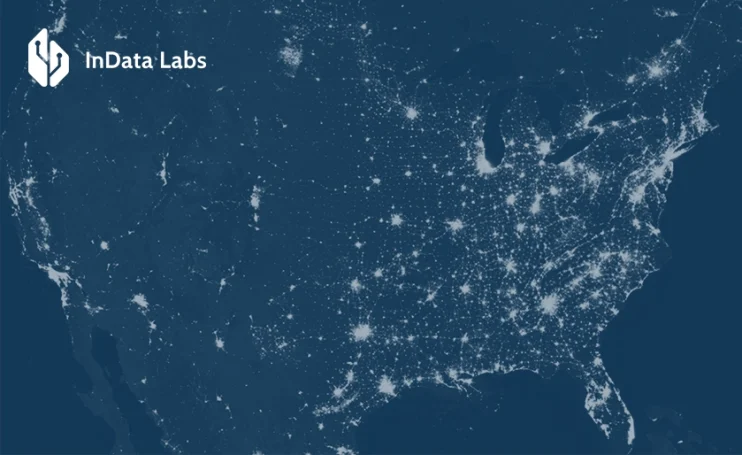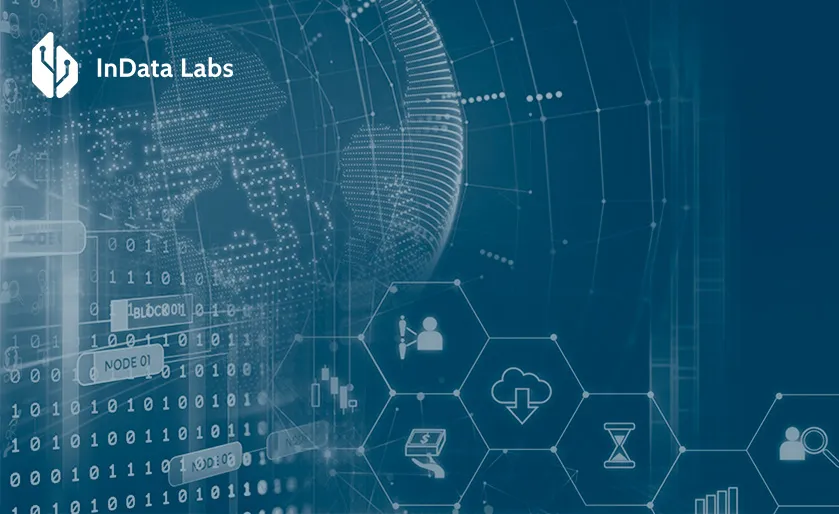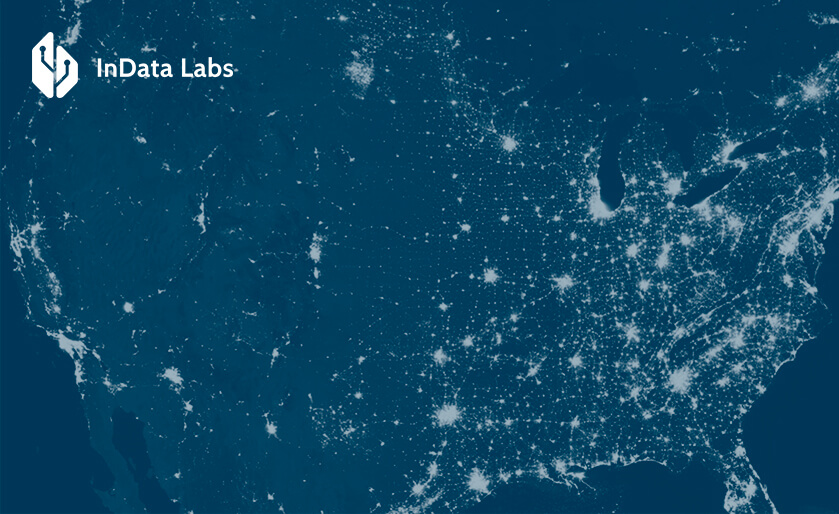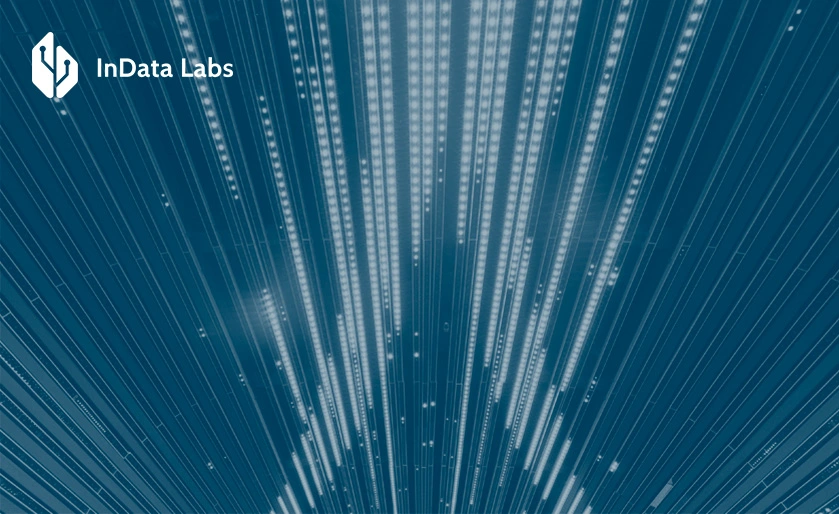In our time data mastery is a power. Businesses that fail to embrace efficient data management risk falling behind. It all starts with the data collection and analysis. Applying tools and approaches to analytics, companies embark on the path of transforming their vision. This valuable information helps to increase productivity, save resources, and ultimately ensure growth and success. This article reveals business analytics vs data science exploring objectives, advantages, and use cases.
Data analysis goes through the entire company, covering all departments. Production, sales, finance, marketing, human resources, and supply chain units generate data and need visibility. Executives receive information for strategic decisions and progress assessments in achieving the company’s goals. And teams directly for their activities and tactical decisions.

Source: Unsplash
A widespread confusion is that business analytics is the same as data science. Both of them are indeed analyzing the data. But their differences lie in-depth, technical competence, and ultimate goals. Let’s explore this topic in more detail.
Business analytics and data science difference
Both approaches leverage data to resolve issues but act from different angles. We can give a beautiful analogy. Business analytics claims to be magnifying glasses that clearly depict a specific area. At the same time, data science is like a powerful microscope that allows us to see the complex details and hidden structures in that area. Here are their key differences:
Focus and scope of analysis
BA: Primarily concerned with answering business questions and resolving practical problems. It focuses on historical data to understand “what happened” and “why.” It supports decision-making, improves performance, and identifies growth opportunities. BA has a narrower scope, working with well-defined business problems.
DS: Has a broader scope, exploring data to uncover hidden patterns, predict future trends, and suggest solutions for new or unforeseen challenges. It aims to drive innovation and achieve strategic objectives.
Data types for analysis
BA: Works with structured data from internal sources like various databases, and systems like CRM and ERP systems. These data are usually pre-collected and presented in the form of numbers.
DS: Works all data types, structured and unstructured, acquiring from a variety of sources. Besides databases, it can be text files, data coming directly from sensors, images, info from social media, and much more. Data science services can cope with fairly large amounts of data, such as complex datasets and Big data.

Source: Unsplash
Available techniques
BA: Utilizes established techniques like business modeling, statistical analysis, data analysis, and mining. Analysts may use Business intelligence (BI) tools to create dashboards and reports.
DS: Employs techniques similar to those used in BA. Along with data visualization, predictive modeling, data warehousing, and advanced statistical analysis. In addition, for handling more complicated tasks data science actively uses technologies like AI, machine learning, deep learning, and natural language processing.
Time horizon for analysis
BA: Primarily focused on decisions with short and medium-term perspectives. Analytical data is the basis for tactical improvements and reactive adjustments.
DS: Gives support for long-term decisions with strategic importance. Sophisticated algorithms provide necessary information for developing new products, and business models. And as well as for proactive initiatives like identifying opportunities and risks.
Key skills to obtain
Business analysts: They know the business domain and data analysis techniques. BAs can use data visualization tools like Tableau and Power BI. Their ability for storytelling ensures communicating insights to non-technical stakeholders.
Data scientists: They are more technical specialists with skills in programming for Python and R languages. DSs know statistics, understand ML algorithms at a deep level, and can deal with complex datasets.
When understanding these distinctions, companies can act more effectively. This means they leverage the right tools and expertise for their specific data-driven needs. If you want to extract the most valuable information from the data and achieve optimal results, you need to ask the right questions and choose the right approach.

Source: Unsplash
Why business analytics matters
Business analytics is an indispensable tool for any company that wants to make efficient decisions and improve processes. Better planning, risk management, and cost control. It offers a rich set of advantages:
- Data-driven decisions: Business analytics acts as a translator that converts complex data sets into clear and understandable information. This force allows businesses to move beyond gut feelings and hunches. Instead, they base their decisions on convincing evidence and analytical reasoning. Furthermore, real-time data analysis enables agile responses to market shifts and evolving customer needs. Companies ensure their strategies stay relevant and effective.
- Boosting efficiency and productivity: BA acts as a spotlight, illuminating areas where processes can be optimized. Companies can identify bottlenecks and inefficiencies. And then as measures eliminate unnecessary steps, reallocate resources, and automate manual tasks. This translates to increased overall efficiency and productivity. Which ultimately leads to cost savings. Every process improvement equates to reduced expenses, ensuring a greater return on investment.
- Building stronger customer relationships: Understanding your customers is paramount to business success. BA empowers companies to delve into market trends and understand their target audience. This means uncovering customer preferences, purchase decision-making factors, and brand interaction patterns. Equipped with such insights, companies can refine their sales strategies, personalize marketing campaigns, and tailor product offerings. You foster customer loyalty and satisfaction while minimizing customer churn.
If you need more evidence, Amazon offers their business clients in-built business analytics. Clients can track all the info about Amazon purchases including returns, refunds, transaction details, payment tools, and more. And also details about buyers. They can generate different kinds of reports and provide more visibility. It is a way to manage inventory effectively, optimize costs, and improve the product line.
How to combine Big data and business analytics
In the realm of business analytics, Big data refers to massive and complex datasets that traditional data analysis tools struggle to handle. This data sets itself apart due to its huge size, variety of formats), and real-time or near-real-time generation. Despite its apparent complexity, Big data unlocks immense potential for BA, offering: deeper insights, real-time decision-making, and predictive analytics.
To effectively implement it, business analysts should follow several important steps. First of all, define the business objectives and questions that need to be answered using Big data.
Traditional tools might not suffice for scalable storage, processing, and analytics. Besides, it’s necessary to ensure consistent quality, accuracy, and reliability of the data used for analysis. Technical support from the IT team is needed here.
To explore large complex datasets, BAs should utilize advanced statistical analysis to identify trends and create clear, compelling dashboards and reports to communicate insights effectively. Collaboration with data scientists unlocks the power of machine learning for predictive analytics.
Unveiling the data science landscape
Data analytics is woven into the fabric of our daily lives. From the content recommendations you see on Netflix to the spam filter in your email. Data science algorithms play a significant role.
Benefits of data science
Data science has greater depth and force of transformation. Using the strength of data and advanced analytical methods, DS also helps to make decisions and supports strategic planning. However, it has its own distinct advantages:
Foresight and opportunity discovery: DS acts as a future-focused telescope, peering beyond the present to reveal hidden patterns and tendencies buried in massive datasets. Using this predictive power companies may:
- Uncover new market opportunities: DS analyzes the market and determines corresponding internal optimization opportunities. Based on data-driven insights can think about new product lines, service enhancements, or other strategic pivots.
- Fuel innovation: Data science isn’t just about reacting. It’s about proactive innovation. By identifying customer needs and market trends, DS encourages companies to develop cutting-edge products and services that will be ahead of the curve.
Precision product development: BA excels at understanding current customer behavior, but DS takes it a step further. By studying large volumes of data, including customer feedback, usage patterns, and market trends, customer care analytics coupled with DS provides a 360-degree view of product performance:
- Unmask product weaknesses: DS goes beyond surface-level satisfaction surveys. It pinpoints areas for improvement, revealing what features resonate with customers and identifying aspects that fall short. This allows companies to make targeted product enhancements and optimizations.
- Predict customer demands: DS acts as a magic crystal, anticipating the future needs and desires of customers. By exploring trends, companies can proactively develop new products to meet evolving customer expectations. And ensure they remain relevant and withstand competition.

Source: Unsplash
Proactive risk management: In today’s uncertain world, risk management is paramount. Here’s where DS shines:
- Predictive risk assessment: DS goes beyond detecting past risks. It analyzes historical data together with emerging tendencies to anticipate potential disruptions in finance, security, operations, and others prior to them happening.
- Mitigating possible losses: Forewarned means forearmed. By proactively identifying risks, companies can develop mitigation strategies to minimize potential losses and ensure business continuity.
How to use AI in data science
AI in data science is a powerful engine that provides additional capabilities. Automation rocks here. There is no need to spend hours cleaning, preparing, and transforming data before starting the analysis. Data scientists can use that time to build models and interpret results. The next benefit refers to unveiling what is hidden. Machine Learning algorithms are capable of detecting intricate patterns and relationships that might be invisible to human eyes. This means that they can perform tasks such as identifying anomalies and flagging potential fraudulent activities, predicting potential failures of machines, and deeper customer segmentation.
The more diverse the data is examined, the more accurate and transparent the result will be. Deep learning offers its toolset. Natural language processing is used to analyze textual data from customer reviews or social media posts to understand the sentiment and extract key information. AI technologies also enable image recognition to detect predefined characteristics.
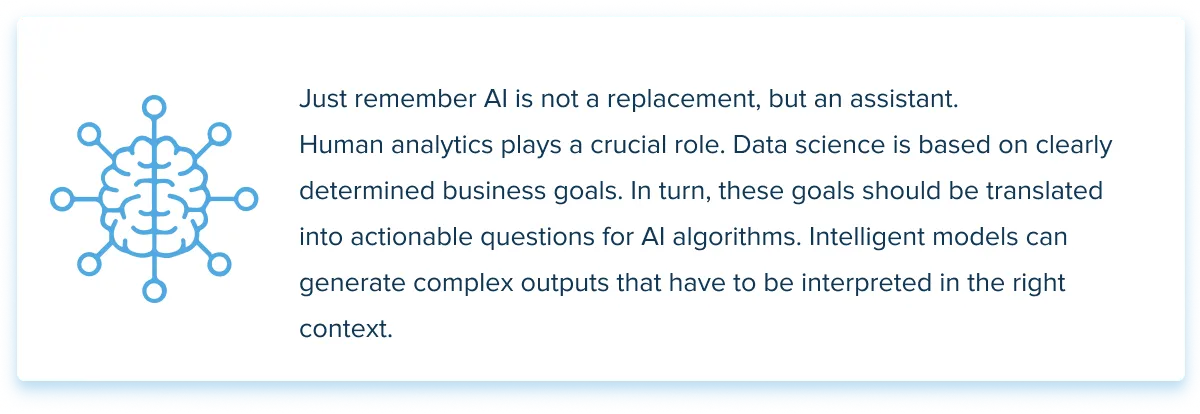
Netflix use case
Since its founding, Netflix has positioned themselves as a data-driven company. They use several data analytics techniques including data engineering, data science, visualization engineering, problem framing, and more. Data serves heavily to user experience personalization and content delivery optimization.
Netflix analyzes all data about its users. What content do they watch, how much do they watch, and when do they stop watching? All ratings and reviews. What content do they search on the platform? What devices do they use to watch Netflix? By analyzing this data, the company can build a unique profile of users and their watching preferences. The result is their marvelous recommendation system.
Moreover, with data science, Netflix identifies patterns of subscription cancellation to take additional actions for retention; and analyzes the results of A/B testing comparing different UI elements and marketing activities.

Source: Unsplash
This data-driven approach allows them to create a unique user experience on the platform. Numbers speak louder than words. According to Statista for the first quarter of 2024, Netflix has around 269.6 million paid subscribers worldwide The rise is 9 million from the previous quarter. The average daily usage of the US adults is estimated as 62 minutes.
Business analytics and data science for business problems
Data science and business analytics are both powerful tools. However, their true strength lies in their symbiotic relationship. Business analysts have a deep understanding of specific challenges and goals of business. They translate those needs into clear questions for data scientists. In turn, data scientists uncover hidden patterns and trends which might be invisible to traditional BA methods. Such collaboration empowers businesses to take data-driven decisions and optimize strategies.
An illustrative example is sales. Imagine a retail or e-commerce scenario where BA identifies a sales decline in a particular product category. DS can then delve into customer data to understand the reason behind the drop. Based on insights combination, the company can perform targeted sales and marketing actions. Or the product might even be discontinued entirely.
Embedding data science in business analytics
Their synergy can be enhanced more by embedding data science techniques within business analytics. Here’s how:
- Machine learning in business analytics algorithms are capable of analyzing large volumes of data. Both structured and unstructured. They fill in the gaps left by traditional BA methods.
- Predictive models generated through data science allow BA to take proactive steps based on anticipated opportunities.
- DS provides BA with interactive and informative data visualization tools. They are especially useful for complex insights.
The power of data science in business analytics can be demonstrated by several examples.
- Customer churn prediction: BA may analyze historical data to identify customer churn patterns. DS can then build a machine learning model to predict which customers are at high risk of leaving, allowing businesses to take proactive retention measures.
- Sales forecasting: BA through analysis of past sales data might identify seasonal trends. Then DS can be used to create a more sophisticated sales forecasting model. The company gets improved inventory management and sales planning.
- Risk management: In combination BA and DS can track key financial metrics and develop a comprehensive risk assessment model. Whereby businesses may proactively mitigate potential financial or operational disruptions.
When working together, marketing analytics and data science form a potent force for data-driven decision-making and business optimization. Their complementary strengths unlock deeper insights. And companies are able to navigate the ever-changing business landscape with greater foresight and precision.
Final words
The question of “data science or business analytics?” is a common one. However, the answer lies on the surface. You should not choose one over the other, but harness the power of both. They function in a complementary way, where each is playing a critical role. Together, they form a comprehensive strategy for driving sustainable success.
As technology evolves continuously, the future of analytics promises a surge in capabilities. Advanced algorithms, powerful new tools, seamless integrations, and innovative practices will emerge. This technological wave will not only strengthen the positions of BA and DS, but also extend their capabilities in terms of velocity, precision, and the ability to handle increasingly complex data landscapes. Empowered by this renaissance of technologies, businesses can unleash the genuine potential of their data.
FAQ
-
Your choice should lay alongside your specific needs and business objectives. If you’re primarily interested in using data to improve business processes and drive operational efficiency, go for business analytics. On the other hand, data science rocks when you need deeper insights to make predictions and uncover new opportunities.
-
Yes, data analytics is vital for businesses across all industries. In fact, it sheds light on business operations, market trends, and customer preferences. Accurate data empowers an efficient decision-making process. Through the analysis, companies can identify bottlenecks and inefficient spending of funds. As a result, they can optimize costs and processes. Data analytics also helps companies allocate resources more effectively, and detect and mitigate potential risks.
-
Yes, data science is beneficial. It empowers business analytics with more advanced techniques to uncover deeper insights. DS provides an opportunity to work with complex unstructured data and to improve accuracy. Don’t forget about predictive modeling and automation of analytics activities.
-
Yes, a business analyst has the skills to do data analytics. They can handle tasks like generating reports, uncovering trends from structured data, and creating data visualizations. However, more advanced analytics require additional training.
-
Business analytics can be utilized in multiple facets of a business to drive clarity and guide improvements. Some application areas are:
- Market analysis serves to study trends, market situations, and competitors.
- Analysis of operational efficiency helps to evaluate performance and all business processes.
- Workforce analysis aids in improving recruitment, retaining top talent, and understanding employee satisfaction.
- Customer research including behaviors, demography, and preferences serves the purposes of sales and marketing.
- Financial data analysis contributes to better budgeting, forecasting, and overall financial metrics.
-
Yes, business analytics is closely associated with business. It bridges data with business strategy and empowers taking decisions based on data. Companies can make strategic choices on resource allocation, operations, product development, and marketing campaigns. The insights allow identifing areas for improvement and optimizing their performance across all departments.
-
Business analytics is a fundamental tool for businesses of all sizes and across industries. More companies recognize the importance of analysis and its role in making decisions driven by data. Statistics confirm this. According to Gartner, over 98% of organizations with over 100 employees leverage BA to some extent.
